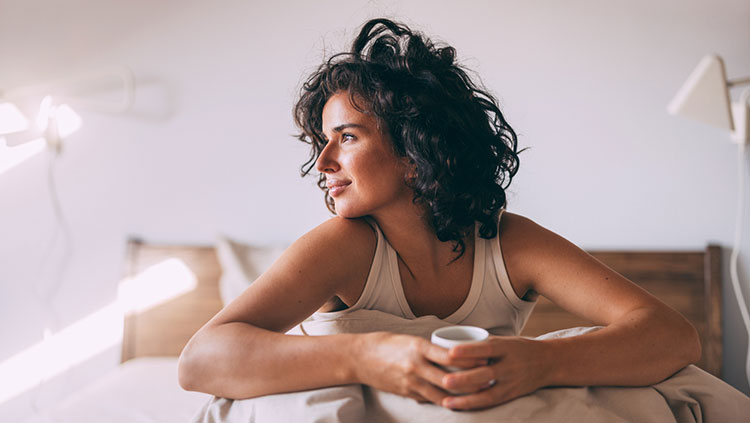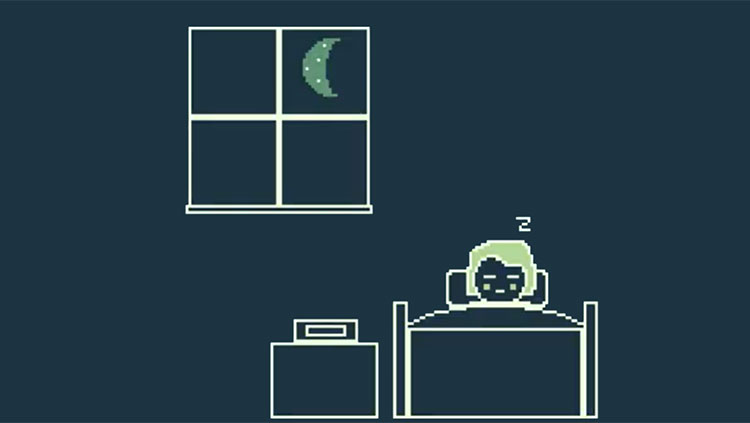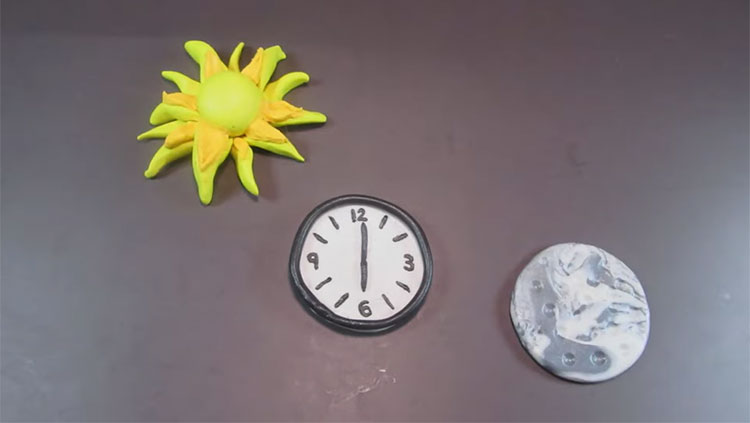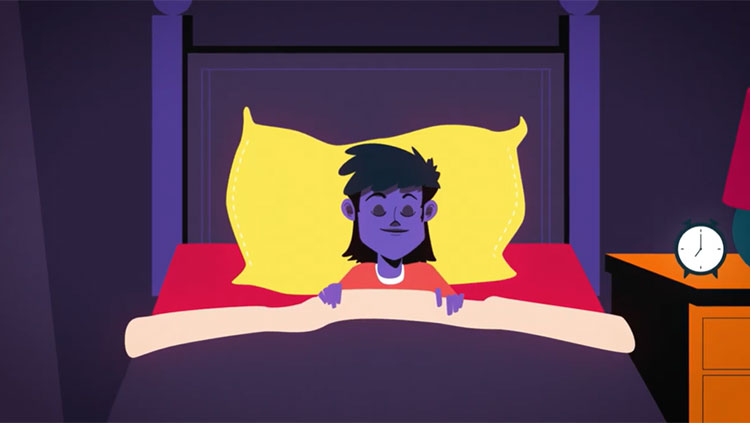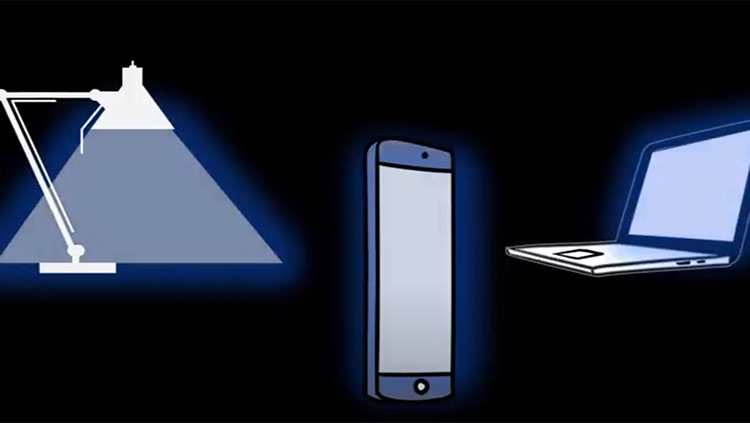The Allure of the Weighted Blanket
- Published30 Nov 2018
- Reviewed30 Nov 2018
- Author Shelby Pope
- Source BrainFacts/SfN
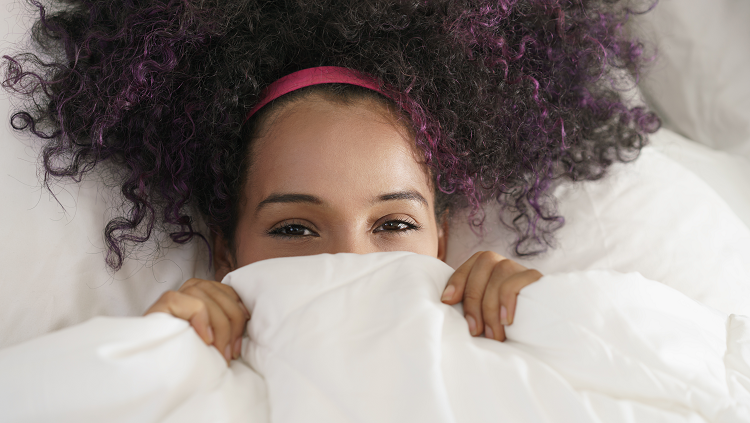
Most of us enjoy burrowing in a pile of blankets, maybe with some tea and settling in with the latest page turner or, perhaps, a Netflix binge. But some people take it a step further, swearing by weighted blankets weighing twenty or more pounds. Their fans — of which there are many; one weighted blanket on Amazon has over a thousand, overwhelmingly positive reviews — say that they help alleviate symptoms associated with insomnia, anxiety, and even autism. But do they actually work?
“I think it’s a very promising approach,” says Gaby Badre, a sleep specialist and neurophysiologist at the University of Gothenburg in Sweden. In 2015, Badre examined whether sleeping with a weighted blanket could improve sleep in people with insomnia. He had thirty-one adults with mild to moderate insomnia sleep with a weighted blanket for two weeks while electrodes measured their brain and muscle activity. The participants moved around less in their sleep, and they experienced fewer bursts of brain activity called sleep spindles. While sleep spindles are important for memory consolidation, their reduction may indicate a deeper, sounder sleep. Furthermore, waking after sleep onset decreased and total sleep time increased with the blanket. Most of the participants said they enjoyed using the blankets and felt they slept better.
Research like Badre’s is still limited. But there’s encouraging evidence that weighted blankets can also ease anxiety. A 2013 study found weighted blankets could reduce stress and anxiety during a routine dental checkup. Patients’ heart rates slowed, and they had more activity in the parasympathetic nervous system, the nerves associated with rest and relaxation and the counterpart to the fight-or-flight system.
Weighted blankets and other forms of deep pressure stimulation have a long history in the autism community. An early precursor to the weighted blanket can be traced to Temple Grandin, the animal scientist and autism advocate who developed the “hug box” for autistic people like herself. As a high schooler in the 1960s, she spent time on a relative’s ranch and noticed the cattle were soothed when they walked through a narrow chute. She realized that she felt similarly relaxed when experiencing deep pressure stimulation. Over the years, clinicians and providers in the occupational therapy fields have turned to deep pressure stimulation to relax and improve sleep quality in autistic patients, whether through Grandin’s machine or weighted vests or blankets.
As for why we enjoy the feeling of being (safely) buried, part of it might stem from childhood. “The pressure, if it’s homogeneous and well distributed along the body, can give you the cocooning effect,” Badre says. “As a child, we always like to put ourselves in a cocoon.” Such cocooning might mimic the relaxing effects of being touched and held.
Debra Kissen, executive director of Chicago’s Light on Anxiety CBT Treatment Center, occasionally uses a weighted blanket in her practice. It’s not a cure-all, but one of the many different tools her patients can use to help regulate their emotions and self-soothe. Anxiety or panic can sometimes manifest as feeling disconnected or unreal, and the weighted blanket can help someone experiencing this to feel more grounded, Kissen says.
Some people might love the feeling of being under a heavy blanket. Others, Kissen says, might not enjoy the sensation and instead feel trapped and panicked. It’s not for everyone, agrees Badre. He also notes weighted blankets might not be effective for those with severe insomnia. But, he says, his results show the blankets may improve sleep — without the side effects and addiction potential of sleeping pills.
CONTENT PROVIDED BY
BrainFacts/SfN
References
Chen H.-Y., Yang H., Chi H.-J., Chen H.-M. (2013). Physiological effects of deep touch pressure on anxiety alleviation: the weighted blanket approach. Journal of Medical and Biological Engineering, 33(5) 463-470. doi: 10.5405/jmbe.1043.
Chen H.-Y., Yang H., Meng L.-F., Chan P.-Y. S., Yang C.-Y., Chen H.-M. (2016). Effect of deep pressure input on parasympathetic system in patients with wisdom tooth surgery. Journal of the Formosan Medical Association, 115(10) 853-859. doi: 10.1016/j.jfma.2016.07.008
Gee B. M., Peterson T. G., Buck A., & Lloyd K., (2016). Improving sleep quality using weighted blankets among young children with an autism spectrum disorder. International Journal of Therapy and Rehabilitation, 23(4), 173-181. doi: 10.12968/ijtr.2016.23.4.173
Grandin T. (1992). Calming effects of deep touch pressure in patients with autistic disorder, college students, and animals. Journal of Child and Adolescent Psychopharmacology, 2(1) 63-72. doi: 10.1089/cap.1992.2.63
Gringras P., Green D., Wright B., Rush C., Sparrowhawk M., Pratt K., Allgar V., Hooke N., Moore D., Zaiwalla Z. & Wiggs L. (2014). Weighted Blankets and Sleep in Autistic Children—A Randomized Controlled Trial. Pediatrics, 134(2), 298-306. doi: 10.1542/peds.2013-4285
Krauss K. E. (1987). The effects of deep pressure touch on anxiety. The American Journal of Occupational Therapy, 41(6) 366-373. doi: 10.5014/ajot.41.6.366
Mullen B., Champagne T., Krishnamurty S., Dickson D., & Gao R. X. (2008). Exploring the Safety and Therapeutic Effects of Deep Pressure Stimulation Using a Weighted Blanket. Occupational Therapy in Mental Health, 24(1), 65-89. doi: 10.1300/J004v24n01_05
Also In Sleep
Trending
Popular articles on BrainFacts.org




